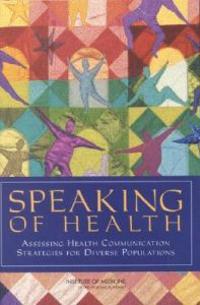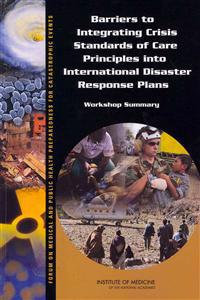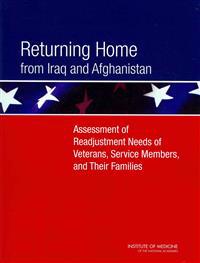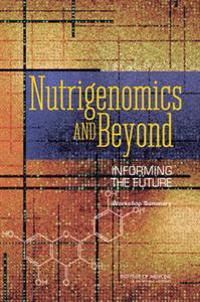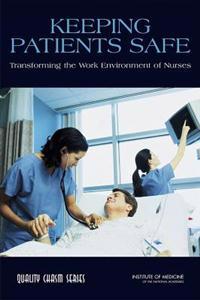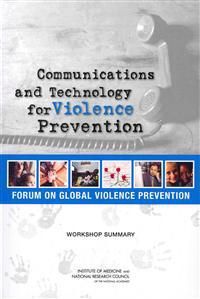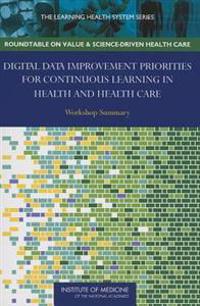Confronting Commercial Sexual Exploitation And Sex Trafficking Of Minors In The United States (Inbunden)
avCommittee On Commercial Sexual Exploitation And Sex Trafficking Of Minors In The United States, Board On Children, Youth, And Families, Institute Of Medicine
ISBN: 9780309286558 - UTGIVEN: 2013-10-01Speaking of Health (Inbunden)
avCommittee on Communication for Behavior Change in the 21st Century: Improvi, Board on Neuroscience and Behavioral Health, Institute of Medicine
ISBN: 9780309072717 - UTGIVEN: 2002-11We are what we eat. That old expression seems particularly poignant every time we have our blood drawn for a routine physical to check our cholesterol levels. And, it's not just what we eat that affects our health. Whole ranges of behaviors ultimately make a difference in how we feel and how we main[...]
Social and Economic Costs of Violence (Häftad)
avForum on Global Violence Prevention, Board on Global Health, Institute of Medicine
ISBN: 9780309220248 - UTGIVEN: 201202Measuring the social and economic costs of violence can be difficult, and most estimates only consider direct economic effects, such as productivity loss or the use of health care services. Communities and societies feel the effects of violence through loss of social cohesion, financial divestment, [...]
Barriers to Integrating Crisis Standards of Care Principles into International Disaster Response Plans (Häftad)
avForum on Medical and Public Health Preparedness for Catastrophic Events, Board on Health Sciences Policy, Institute of Medicine
ISBN: 9780309221788 - UTGIVEN: 201204When a nation or region prepares for public health emergencies such as a pandemic influenza, a large-scale earthquake, or any major disaster scenario in which the health system may be destroyed or stressed to its limits, it is important to describe how standards of care would change due to shortages[...]
Exploring Health and Environmental Costs of Food (Häftad)
avFood and Nutrition Board, Board on Agriculture and Natural Resources, Institute of Medicine
ISBN: 9780309265805 - UTGIVEN: 201212The U.S. food system provides many benefits, not the least of which is a safe, nutritious and consistent food supply. However, the same system also creates significant environmental, public health, and other costs that generally are not recognized and not accounted for in the retail price of food. T[...]
Returning Home from Iraq and Afghanistan (Häftad)
avCommittee on the Assessment of the Readjustment Needs of Military Personnel, Board on the Health of Select Populations, Institute of Medicine
ISBN: 9780309264273 - UTGIVEN: 201303As of December 2012, Operation Enduring Freedom (OEF) in Afghanistan and Operation Iraqi Freedom (OIF) in Iraq have resulted in the deployment of about 2.2 million troops; there have been 2,222 US fatalities in OEF and Operation New Dawn (OND)1 and 4,422 in OIF. The numbers of wounded US troops exce[...]
How to Really Love Your Child (Häftad)
avCommittee on the Assessment of the Readjustment Needs of Military Personnel, Board on the Health of Select Populations, Institute of Medicine
ISBN: 9780781439121 - UTGIVEN: 200401Many parents would be dismayed to discover that their child feels unloved. After all, they make sure that their child has the things they need. They attend their child's school events. They buy their child the things they want. "So why is it then that most children doubt that they are genuinely and [...]
From Neurons to Neighborhoods (Inbunden)
avNational Research Council and Institute of Medicine, Committee on Integrating the Science of Early Childhood Development
ISBN: 9780309069885 - UTGIVEN: 200011How we raise young children is one of today's most highly personalized and sharply politicized issues, in part because each of us can claim some level of "expertise." The debate has intensified as discoveries about our development-in the womb and in the first months and years-have reached the popula[...]
Crossing the Quality Chasm (Inbunden)
avCommittee on Quality of Health Care in America, Institute of Medicine
ISBN: 9780309072809 - UTGIVEN: 200107This is the second in a series of publications from the Institute of Medicine's Quality of Health Care in America project. Today's health care providers have more research findings and more technology available to them than ever before. Yet recent reports have raised serious doubts about the quality[...]
Nutrigenomics and Beyond (Häftad)
avFood and Nutrition Board, Institute of Medicine, National Academy of Sciences
ISBN: 9780309104890 - UTGIVEN: 2007-06The integration of biology, genomics, and health has opened the possibility of applying genomics technology to nutrition. In 2001, scientists associated with the Human Genome Project announced the successful mapping of the reference sequence of the human genome. Since then, a body of information has[...]
To Err is Human (Häftad)
avCommittee on Quality of Health Care in America, Institute of Medicine
ISBN: 9780309261746 - UTGIVEN: 200003Experts estimate that as many as 98,000 people die in any given year from medical errors that occur in hospitals. That's more than die from motor vehicle accidents, breast cancer, or AIDS--three causes that receive far more public attention. Indeed, more people die annually from medication errors th[...]
Food Marketing to Children And Youth (Inbunden)
avInstitute of Medicine (U. S.), J. Michael McGinnis, Jennifer Appleton Gootman
ISBN: 9780309097130 - UTGIVEN: 2006-04Creating an environment in which children in the United States grow up healthy should be a high priority for the nation. Yet the prevailing pattern of food and beverage marketing to children in America represents, at best, a missed opportunity, and at worst, a direct threat to the health prospects o[...]
Keeping Patients Safe (Pocket)
avInstitute of Medicine (U. S.) Committee (COR)
ISBN: 9780309187367 - UTGIVEN: 2004-03Building on the revolutionary Institute of Medicine reports To Err is Human and Crossing the Quality Chasm, Keeping Patients Safe lays out guidelines for improving patient safety by changing nurses' working conditions and demands. Licensed nurses and unlicensed nursing assistants are critical partic[...]
Nutrition and Traumatic Brain Injury (Häftad)
avTrauma Committee on Nutrition, Food and Nutrition Board, Institute of Medicine
ISBN: 9780309210089 - UTGIVEN: 2011-06Traumatic brain injury (TBI) accounts for up to one-third of combat-related injuries in Iraq and Afghanistan, according to some estimates. TBI is also a major problem among civilians, especially those who engage in certain sports. At the request of the Department of Defense, the IOM examined the pot[...]
Communications and Technology for Violence Prevention (Häftad)
avForum on Global Violence Prevention, Board on Global Health, Institute of Medicine
ISBN: 9780309253512 - UTGIVEN: 201209In the last 25 years, a major shift has occurred in the field of violence prevention, from the assumption that violence is inevitable to the realization that violence is preventable. As we learn more about what works to reduce violence, the challenge facing those who work in the field is how to use [...]
Digital Data Improvement Priorities for Continuous Learning in Health and Health Care (Häftad)
avRoundtable on Value & Science-Driven Health Care, Institute of Medicine
ISBN: 9780309259415 - UTGIVEN: 2013-03Digital health data are the lifeblood of a continuous learning health system. A steady flow of reliable data is necessary to coordinate and monitor patient care, analyze and improve systems of care, conduct research to develop new products and approaches, assess the effectiveness of medical interven[...]
Dave Barry Does Japan (Häftad)
avForum on Global Violence Prevention, Board on Global Health, Institute of Medicine
ISBN: 9780449908105 - UTGIVEN: 199309"One of the funniest peole ever to tap tap on a PC."
PHILADELPHIA INQUIRER
Not since George Bush's memorable dinner with the Japanese prime minister has the Land of the Rising Sun seen the likes of a goodwill ambassador like Dave Barry. Join him as he belts out oldies in a kara[...]


